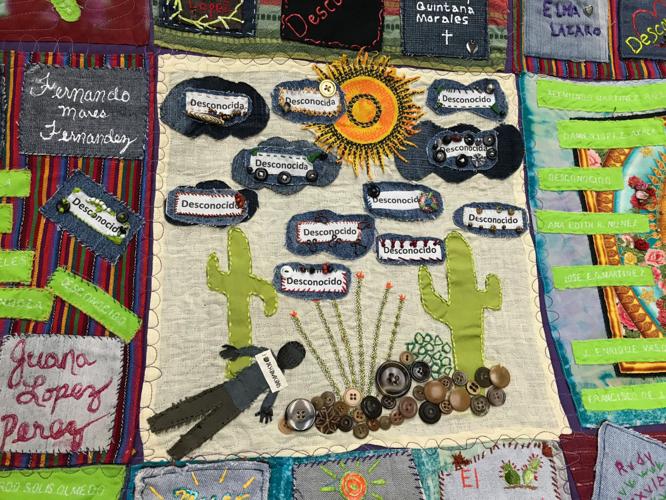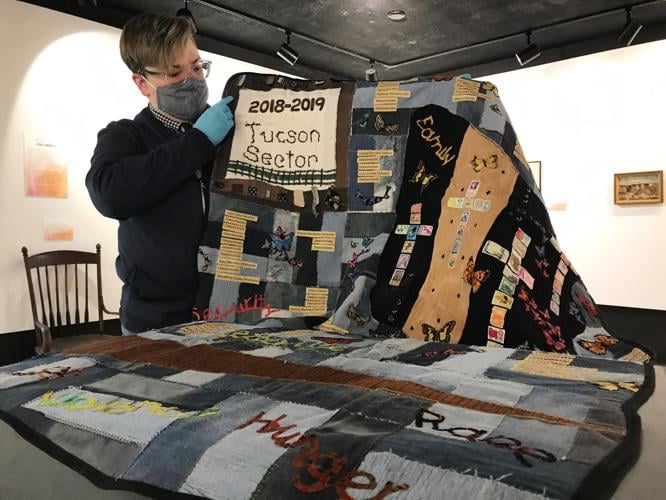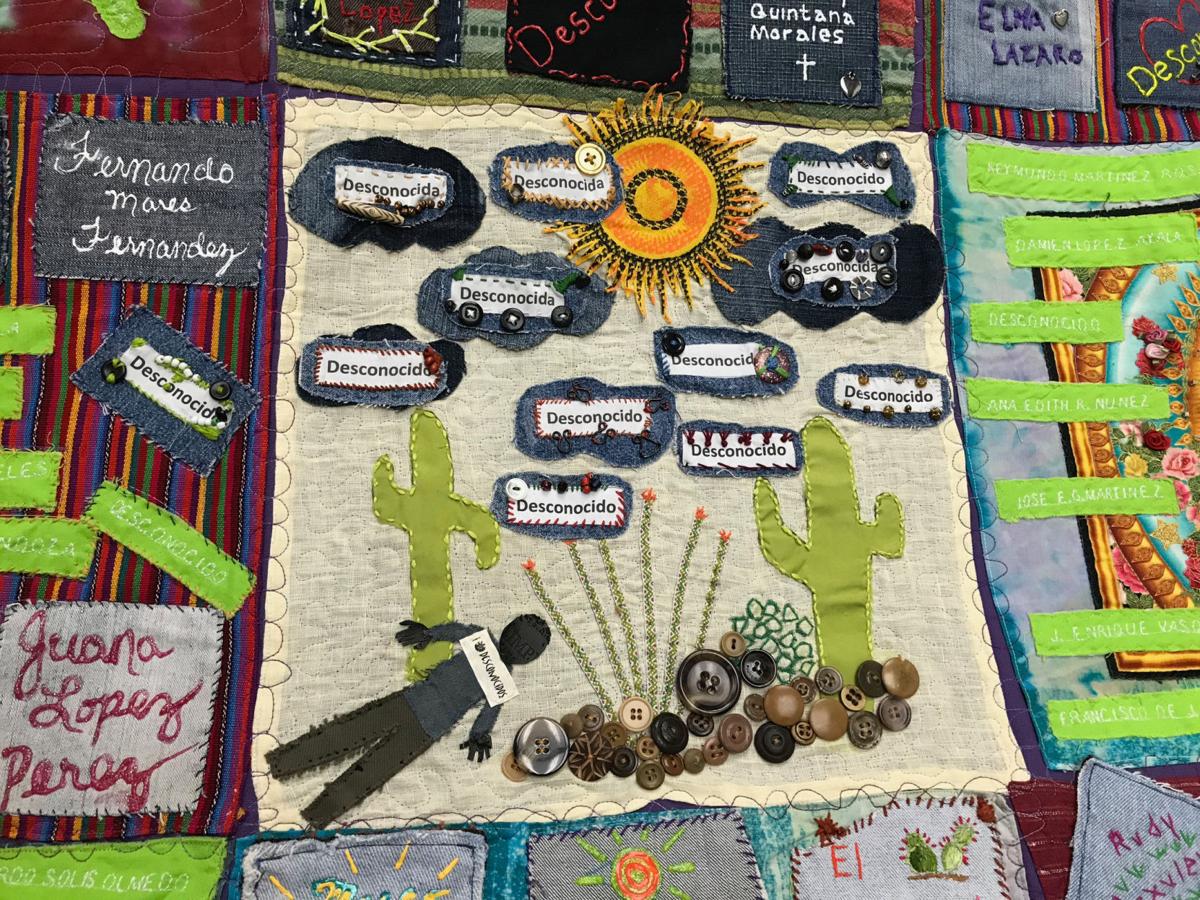Twenty quilts stitched together with clothes abandoned on Arizona’s migrant trails will soon be displayed together for the first time at the Arizona History Museum in Tucson.
The 13-month exhibition, called “Los Desconocidos: The Migrant Quilt Project,” opened Jan. 20 at the museum at Second Street and Park Avenue, just west of the University of Arizona campus.
The intricate quilts are the work of more than 50 artists recruited by border relief volunteer Jody Ipsen and project curator Peggy Hazard to honor those who have died while crossing the desert in search of a better life.
Each quilt memorializes the migrants whose bodies were found during a single federal fiscal year in the Border Patrol’s Tucson Sector, which extends from the New Mexico state line to the eastern edge of Yuma County.
Those whose remains have been identified by the Pima County Medical Examiner’s Office are listed by name. The rest are remembered simply as a “desconocido” or unknown.
“The quilts are beautiful yet poignant representations of a very difficult subject,” said Vanessa Fajardo, Museum Curator with the Arizona Historical Society.
Since 2000-01, the fiscal year of the first quilt, the bodies of more than 3,600 migrants have been found in Southern Arizona, according to records compiled by the medical examiner and the Tucson-based humanitarian group Humane Borders.
About 1,400 sets of remains have gone unidentified.
Ipsen launched the migrant quilt project in 2007 after meeting with people in Mexico and Central America whose loved ones died or disappeared while trying to reach the U.S.

Trish Norman, state museum collections manager for the Arizona Historical Society, unfolds a quilt from the Migrant Quilt Project at the state museum in Tucson.
The “subversive quilt-making collection,” as she calls it, tells their stories of loss and suffering using scraps of fabric and personal items collected from the same desert where so many people have died.
The 2002-03 quilt features a map of Arizona made from multicolored squares of denim and covered in 205 tiny X’s marking the spots where bodies were found.
The 2018-19 quilt incorporates postage stamps from the migrants’ home countries arranged in the shape of crosses.
The 2015-16 quilt includes pesos the quilter found hidden in the hems of several pairs of jeans left behind in the desert.
The new exhibit will mark the Tucson debut of the latest work in the series, the 2019-20 quilt by renowned textile artist Susan Hoffman.
The exhibit also includes statements from the various quiltmakers about their experience with the project.
Ipsen and company donated their creations to the Arizona Historical Society last year so they could be preserved, displayed and loaned out to other museums, churches and public buildings around the country for years to come.
They were the first contemporary works to be added to historical society’s expansive textile collection, which includes roughly 200 quilts dating to the early 1800s.
Each new migrant quilt that is made in the future will also go to the historical society for safekeeping.
Ipsen has said the project will continue “as long as people continue to die” in Arizona’s borderlands.
Based on the latest figures from Humane Borders, 226 sets of remains were found in the Tucson Sector in 2021 alone.
That’s the highest total for a single calendar year since the medical examiner began tracking a dramatic increase in migrant deaths two decades ago. It does not account for the unknown number of people who died in the desert but whose bodies were never found.
If you go
“Los Desconocidos: The Migrant Quilt Project" opened Jan. 20 at the Arizona History Museum, 949 E. Second St.
The museum is open to the public Tuesday through Saturday from 10 a.m. to 2 p.m.
Tickets for admission can be purchased here.
Free validated parking is available at the Main Gate Garage on Second Street, one block west of the museum.






